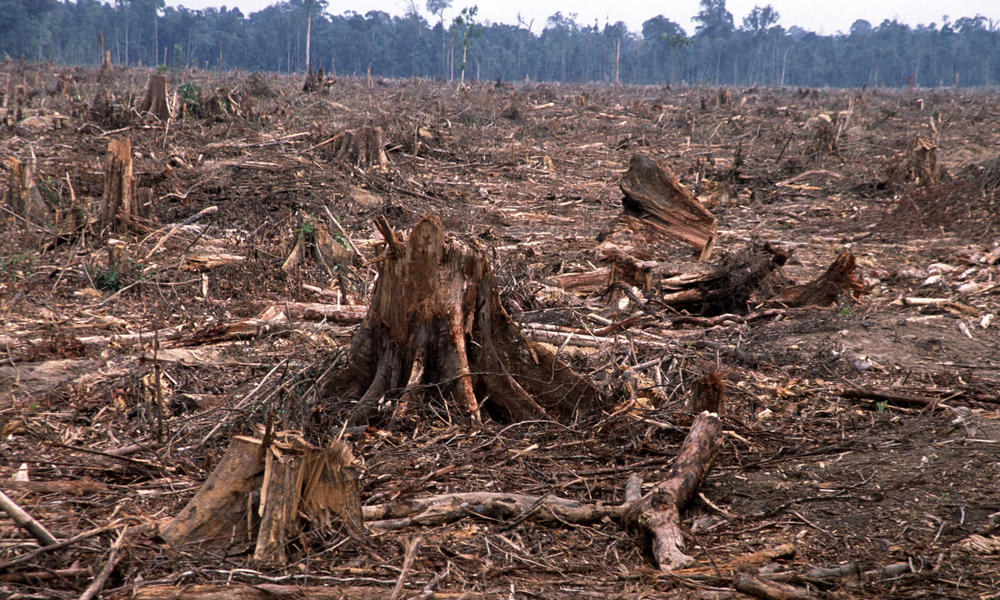Under the category of mitigation I am exploring a land use issue. In the Paris Agreement developed countries are encouraged to contribute to mitigation efforts through nationally determined contributions or NDCs. Whereas developing countries are urged to contribute in mitigation efforts by reducing the emissions caused by deforestation. Developing countries are to complete this task through “sustainable management of forests and enhancement of forest carbon stocks”. This task is referred to as REDD+ or Reducing Emissions from Deforestation and Forest Degradation in Developing Countries. Deforestation is the conversion of forest lands into non forest lands, mainly agricultural lands. This process occurs at the distressing rate of 13 million hectares per year (1990-2005). When the process of deforestation occurs the carbon stored in the trees is released through the decay or burning of the trees. In the 1990s 5.8 GtCO2/yr were released into the atmosphere due to deforestation. Preventing deforestation is the most impactful short term action, per hectare, per year to mitigate the release of carbon into the atmosphere.

The UNFCCC has made a plethora of decisions concerning the mitigation of deforestation, they are detailed in Decision Booklet REDD+. Some decisions that I found to be particularly interesting include the recognition of the needs of local and indigenous communities when actions are taken to reduce emissions. The Conference of the Parties or the COP has also encourages all parties to participate in capacity building and highlights the role that technology can play in the effort to reduce emissions from deforestation through data collection, monitoring, reporting and constructing projections concerning deforestation, among other things. The COP moreover recognizes the diverse drivers that are present in different countries. The COP encourages parties to evaluate these drivers. The UNFCCC has conducted a fair amount of work to enable work related to the topic and has recognized the multifaceted nature of the task.
The REDD+ web platform details how the UNFCCC negotiations branched out to created nine topics that make up REDD+ implementation. These nine elements are the Warsaw Framework for REDD+, Safeguards, National Forest Monitoring Systems, Forest Reference Levels, National Strategy, Capacity Building, Drivers of Deforestation, REDD+ MRV result based payments and UNFCCC documents relevant for REDD+. The REDD web platform is an excellent resource that can be used to understand REDD+.
The work that the UNFCCC is doing concerning REDD+ is important, as forests are crucial carbon sinks. REDD+ provides a framework by which nations can work to reduce the emissions created by deforestation. However the language is incredibly vague and there does not seem to be any enforcement mechanism if a nation fails to meet the requirements of any agreements. I am left to wonder how much impact this well intended measure has on the mitigation of deforestation, if any.
Work Cited
UNFCCC. “Climate Get the Big Picture.” United Nations Framework Convention on Climate Change. http://bigpicture.unfccc.int/ (accessed 8/28/2017).
UNFCCC. “Reducing emissions from deforestation and forest degradation and the role of conservation, sustainable management of forests and enhancement of forest carbon stocks in developing countries (REDD-plus).” United Nations Framework Convention on Climate Change. http://unfccc.int/land_use_and_climate_change/redd/items/7377.php (accessed 8/29/2017).
UNFCCC. “Key decisions relevant for reducing emissions from deforestation and forest degradation in developing countries (REDD+).” United Nations Framework Convention on Climate Change.
http://unfccc.int/files/land_use_and_climate_change/redd/application/pdf/compilation_redd_decision_booklet_v1.2.pdf (accessed 8/29/2017).
UNFCCC. “REDD+ Web Platform.” United Nations Framework Convention on Climate Change. http://redd.unfccc.int/ (accessed 8/28/2017).
